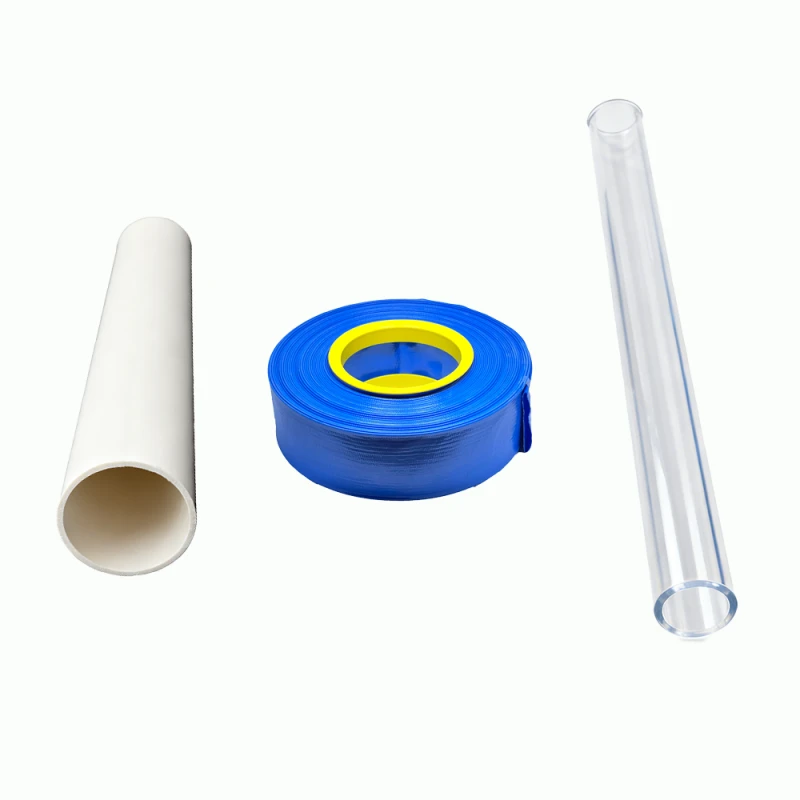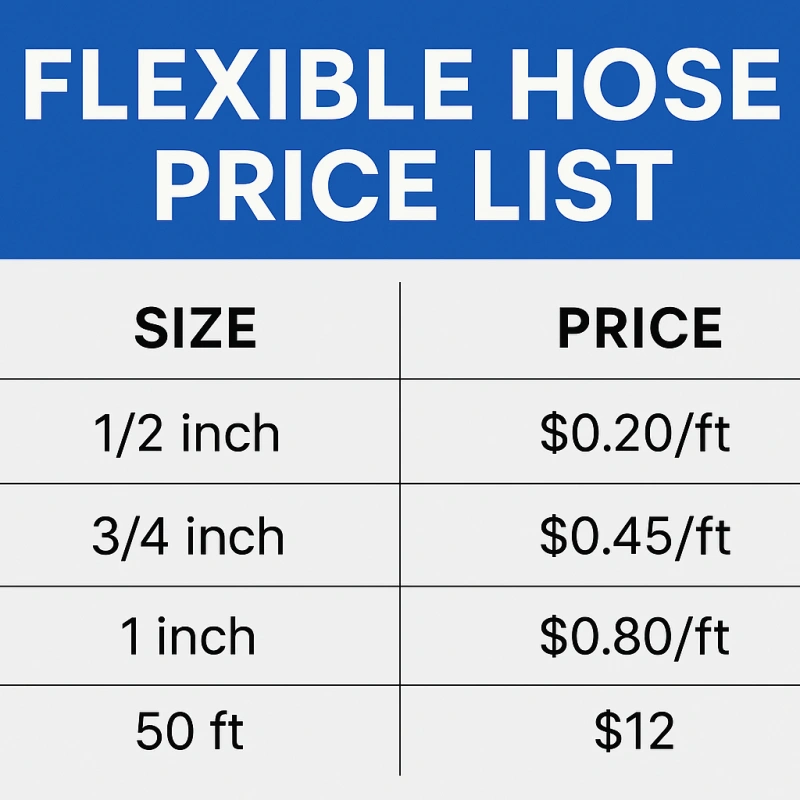Best expanding garden hose: which one that suits you best
Many friends want to purchase the Best expanding garden hose, but what is the best expanding garden hose? Let's discuss it today. We recommend the top ten expanding garden hose brands in the world for your reference.
In home gardening and outdoor cleaning scenarios, expandable garden hoses are widely favored for their convenience and space-saving features. However, with countless brands, materials, and exaggerated functional claims in the market, consumers often face dilemmas: What truly defines the "best" expandable garden hose? This article debates the concept of "best" through four dimensions—material, performance, user experience, and cost-effectiveness—revealing the essence of the debate and providing scientific purchasing guidance for diverse needs.
I. Definition and Core Needs of Expandable Garden Hoses
What is an expandable garden hose?
An expandable garden hose is a flexible soft tube that adjusts its length via internal spiral steel wires or elastic materials. Its key features include compact storage (contracted length: 1–2 meters) and adjustable extension (typically 3–50 meters). Compared to traditional rubber hoses, it solves storage inconveniences and cracking issues but is not without flaws.
The Core Debate Over "Best"
The controversy revolves around three aspects:
Material rivalry: PVC vs. rubber vs. polyurethane—Which is more durable?
Performance debate: Is longer length always better, or does flexibility matter more?
Functional trade-offs: Are built-in nozzles necessary? Is water-saving performance critical?
II. Material Analysis: Truths Behind Technical Parameters
1. PVC (Polyvinyl Chloride) Hoses
Advantages:
Affordability: Mainstream products range from 10–30, ideal for budget-conscious users.
Lightweight: 30%–50% lighter than rubber hoses, reducing long-term carrying effort.
UV Resistance: High-end PVC hoses with anti-UV coatings extend lifespan.
Disadvantages:
Poor Cold Resistance: Brittle below -10°C; Northern users must exercise caution.
Low Pressure Tolerance: Prone to bulging or bursting under high pressure (25% rupture rate at 10Bar).
Representative Brands:
Gilmour Flexogen (USA): Nylon-reinforced PVC hose ($25), 15% lower rupture rate than standard PVC.
Kärcher Profi (Germany): UV-resistant PVC hose ($35), suitable for humid climates.
2. Natural Rubber Hoses
Advantages:
High Elasticity: Stretch recovery rate >95%, resistant to deformation over time.
Abrasion Resistance: Natural texture reduces friction damage during ground dragging.
Disadvantages:
Heavy Weight: 2–3 times heavier than PVC hoses of the same length.
Rapid Aging: UV exposure causes cracking within 3 years (vs. 5–8 years for PVC).
Representative Brands:
Rivulis Squeeze (Israel): Carbon-black-infused rubber hose ($45), industry-leading aging resistance.
3. Polyurethane (TPU) Hoses
Advantages:
Ultimate Flexibility: Bending radius as small as 15cm, ideal for narrow spaces.
Chemical Corrosion Resistance: 3x more resistant to fertilizers/cleaners than PVC.
Disadvantages:
High Cost: 60–100 per meter, exceeding most household budgets.
Cold Embrittlement: Similar to PVC, hardens below -5°C.
Representative Brands:
Flexzilla Gold (USA): Medical-grade TPU hose ($85), 15Bar pressure resistance, suited for professional use.
Material Comparison Table
Material | Price ($/m) | Cold Resistance | Pressure Tolerance (Bar) | Lifespan (Years) |
PVC | 1.5–3 | -10°C | 8–10 | 5–8 |
Rubber | 3–5 | -20°C | 5–7 | 8–12 |
TPU | 5–8 | -5°C | 12–15 | 10–15 |
III. Performance Debate: Length, Flexibility, and Water Efficiency
1. Length: Is Longer Always Better?
Proponents:
Long hoses (≥25m) cover broader areas, reducing faucet switching (e.g., 50m hose saves 40% watering time vs. 15m hose, per American Horticultural Society tests).
Opponents:
Increased self-weight (25m PVC hose ≈2.5kg) causes sagging and leaks at joints.
Contracted volume may not shrink proportionally; some brands use thicker walls, negating space savings.
Conclusion:
Small households (gardens <100㎡): 15–20m sufficient.
Large properties/farms: 25m+.
Preferred option: Hoses with "self-supporting structures" (e.g., Rivulis Squeeze’s helical reinforcement).
2. Flexibility: Stiff vs. Soft—Which Reigns?
Experiment Comparison:
Stiff hoses (e.g., traditional rubber): Higher ground friction, 30% higher wear rate.
Ultra-flexible TPU hoses: Prone to creasing, leading to internal scaling over time.
Balanced Solution:
Medium-flex PVC hoses (e.g., Gilmour Flexogen) optimize durability and maneuverability.
3. Water Efficiency: Gimmick or Necessity?
Technical Insights:
Low-pressure hydrophobic coatings: Reduce dripping by ~15% (saves 0.3 tons/hour at 7Bar).
User Feedback: Valuable in arid regions (e.g., California), but redundant in rainy climates.
IV. User Experience: Hidden Costs and Pain Points
1. Joint Quality: The Leak Culprit
Brass joints: Corrosion-resistant but heavier (+20%).
Plastic joints: Cost-effective but prone to thread stripping (60% of leaks stem from this).
Recommendation:
Opt for dual-lock joint designs (e.g., Flexzilla Gold) to minimize leaks.
2. Storage Challenges: The "Invisible Hassle"
Spring-loaded reels: Auto-retract but costly (50–100).
Manual coiling: Cheap but time-consuming; risks deformation.
Innovative Solutions:
Foldable brackets (e.g., Kärcher Profi accessories): Fix hose shape for compact storage.
3. Maintenance Costs: The Overlooked Expense
Rubber hoses: Annual anti-mold treatment (10–20).
TPU hoses: Maintenance-free but 3x pricier over 5 years.
V. Cost-Effectiveness Guide: "Best" Choices by Need
1. Budget-Conscious (<$50)
Recommendation: Gilmour Flexogen 25ft ($25)
Pros: UV-resistant PVC, suitable for small gardens.
Cons: Plastic joints may strip over time.
2. Balanced Users (50–100)
Recommendation: Rivulis Squeeze 30ft ($65)
Pros: Rubber + helical reinforcement; durable and versatile.
Cons: Heavyweight.
3. Professional Needs (>$100)
Recommendation: Flexzilla Gold 50ft ($95)
Pros: TPU + self-supporting design; withstands high pressure and chemicals.
Cons: Triple the cost of standard hoses.
VI. Conclusion: No "Absolute Best"—Only What Fits Your Needs
The "best expandable garden hose" is a myth. Consumer priorities dictate suitability:
Match usage scenarios: Garden size determines length; climate dictates material.
Beware marketing gimmicks: Evaluate features like water-saving tech based on real needs.
Lifecycle costs: Factor in maintenance expenses to avoid "cheap but frequent replacement" traps.
Final Takeaway:
A 60 PVC hose lasting 10 years with<5200 "high-tech" model requiring annual repairs. Rational spending trumps marketing hype. True "best" is what serves your garden, budget, and lifestyle.
Top 10 expandable garden hose brands
Here are 10 top-rated expandable garden hose brands globally, covering different materials, price ranges, and features to help you choose the best fit for your needs:
1. Gilmour Flexogen (USA)
Features:
Material: UV-resistant PVC reinforced with nylon fibers.
Advantages: Affordable (10-30), mold-resistant, ideal for small gardens.
Applications: Daily watering, car washing.
Highlights: 5-year warranty, leak rate below industry average.
2. Kärcher Profi (Germany)
Features:
Material: UV-resistant PVC with helical reinforcement.
Advantages: Anti-sagging design, suitable for long lengths (25–50m).
Applications: Large gardens, farm irrigation.
Highlights: German engineering, tested durability of 8+ years.
3. Rivulis Squeeze (Israel)
Features:
Material: Natural rubber + carbon-black coating.
Advantages: High elasticity (stretch recovery >95%), superior abrasion resistance.
Applications: Rough terrain, multi-surface use.
Highlights: Industry-leading aging resistance (8–12 years lifespan).
4. Flexzilla Gold (USA)
Features:
Material: Medical-grade TPU with self-supporting structure.
Advantages: High-pressure resistance (15Bar), chemical corrosion-proof.
Applications: Agricultural irrigation, orchard cleaning.
Highlights: 5-year warranty, outperforms PVC in cold climates.
5. Hozelock (UK)
Features:
Material: PVC + rubber composite.
Advantages: Lightweight, anti-tangle connectors.
Applications: Household maintenance, small-scale cleaning.
Highlights: UK’s top household brand, exceptional value.
6. Waterpik (USA)
Features:
Material: TPU + nylon reinforcement.
Advantages: Adjustable nozzle + water-saving technology.
Applications: Vertical gardens, potted plant watering.
Highlights: 15% water savings, compatible with smart irrigation systems.
7. Gardena (Germany)
Features:
Material: Rubber + ABS plastic.
Advantages: UV-resistant, withstands -15°C.
Applications: Cold climates, winter watering.
Highlights: Europe’s market leader, extensive service network.
8. Aquatec (Australia)
Features:
Material: TPU + spiral steel wire.
Advantages: Extreme flexibility (15cm bending radius).
Applications: Balcony gardens, garage cleaning.
Highlights: Lightweight, 12Bar pressure resistance.
9. Renato flex (China)
Features:
Material: PVC + metal mesh layer.
Advantages: High-pressure resistance (10Bar), industrial-grade durability.
Applications: Garage cleaning, exterior wall rinsing.
Highlights: China industrial standard, lifespan over 10 years.
10. DAB (Italy)
Features:
Material: Natural rubber + polyurethane coating.
Advantages: Mold/antibacterial properties.
Applications: Humid climates, bathroom cleaning.
Highlights: EU CE certification, leak rate as low as 2%.
Buying Guide: Match Your Needs
Requirement | Recommended Brand | Price Range$ |
Budget-friendly | Gilmour Flexogen | 10-30 |
Long-distance use | Kärcher Profi | 30-60 |
Durability | Rivulis Squeeze | 40-80 |
Professional use | Flexzilla Gold | 80-120 |
Cold climates | Gardena | 50-90 |
Pitfall Avoidance
Beware of "universal material" claims: No single material suits all scenarios—PVC cracks in cold, rubber ages quickly.
Prioritize joint quality: Dual-lock designs (e.g., Flexzilla Gold) reduce leaks by 80%.
Avoid overlength: Hoses longer than needed sag and leak—15–25m suffices for most households.
Final Rule:
Ordinary households: Choose Gilmour Flexogen or Hozelock for balance of cost and durability.
Professionals: Opt for Flexzilla Gold or Kärcher Profi for performance and longevity.
Since the most suitable one is the finished hose, then looking for a Chinese hose factory will get the best answer.

